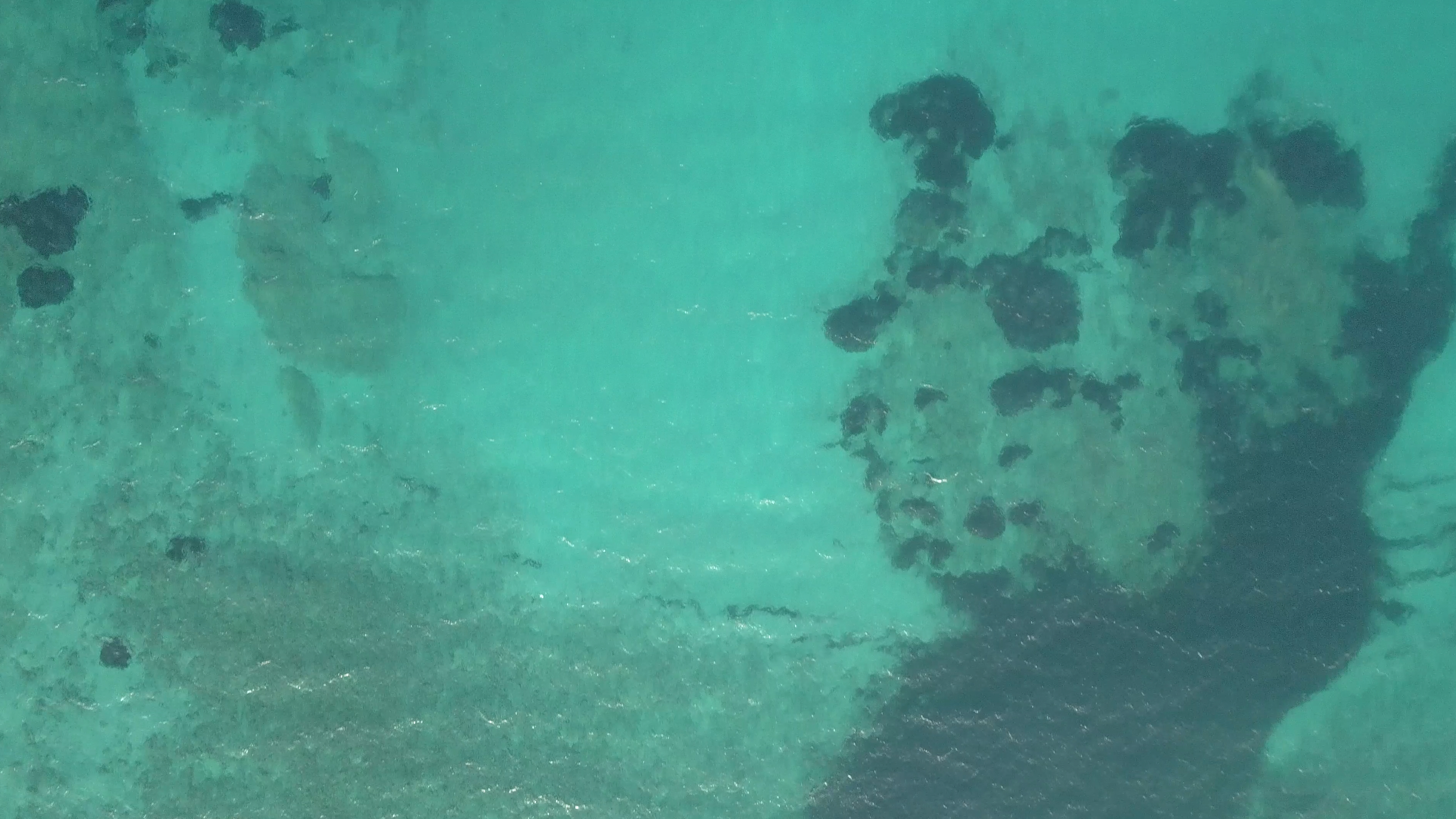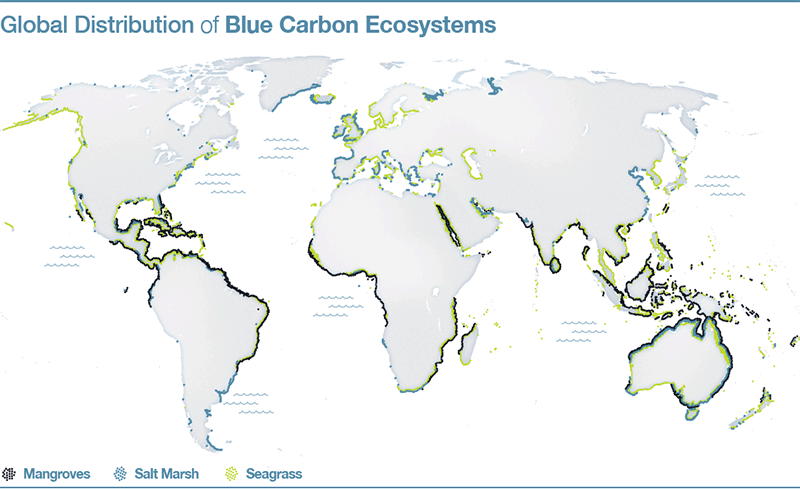What is Blue Carbon?
Blue Carbon is the carbon stored in coastal and marine ecosystems. It is captured by the oceans and coastal ecosystems of the world, unlike the green carbon that is stored by forests and their soils. The Blue Carbon captured by the organisms that live in the oceans is stored in the form of biomass and sediments, mainly in the mangroves, in the peat bogs and in the meadows of phanerogams (like the Posidonia meadows).
 The carbon is stored in the ocean sediments and rhizomes of the marine plant called Posidonia oceanica, which houses innumerable living forms among its leaves: fish, molluscs, seaweed, etc. Photo F. Pacenza
The carbon is stored in the ocean sediments and rhizomes of the marine plant called Posidonia oceanica, which houses innumerable living forms among its leaves: fish, molluscs, seaweed, etc. Photo F. Pacenza
Although the plant biomass in the ocean is lower than the Earth's biomass (0.05%), it absorbs almost the same annual carbon quantity of terrestrial plant organisms, and therefore represents very efficient Blue Carbon sinks.
Marine plants, in particular, contain sediments of organic carbon in sediments higher than those stored by terrestrial forest ecosystems. These ecosystems, including the habitat of the Posidonia meadows, are included in the Natura 2000 Network, a European ecological network created to ensure the long-term maintenance of natural habitats and threatened or rare species of flora and fauna.
 Parco Nazionale dell'arcipelago di La Maddalena (SS): Posidonieto visto dall'alto. Foto M. Miozzo
Parco Nazionale dell'arcipelago di La Maddalena (SS): Posidonieto visto dall'alto. Foto M. Miozzo
|
Despite being protected habitats nationally and internationally, they are disappearing at a rate 4 times higher than land-based ones. |
The degradation and loss of these ecosystems leads to an emission comparable to 10% of emissions deriving from deforestation.
|
Blue Carbon ecosystems cover about 2% of the ocean floor, but they store about 50% of the carbon buried in marine sediments. Their storage capacity is 10 times that of temperate forests and 50 times that of tropical forests. |
To be useful for climate change mitigation, carbon must be sequestered in the long term (at least 100 years), so it is the organic fraction sequestered in matte that assumes the main role from this point of view.
|
The protection and conservation of these marine and coastal habitats is a valid strategy for achieving the objectives of the Paris Agreement, which sets out a global action plan to put the world on track to avoid dangerous climate change by limiting global warming to well below 2°C and pursuing efforts to limit it to 1.5°C. |

To learn more about this topic:
The Blue Carbon Initiative


